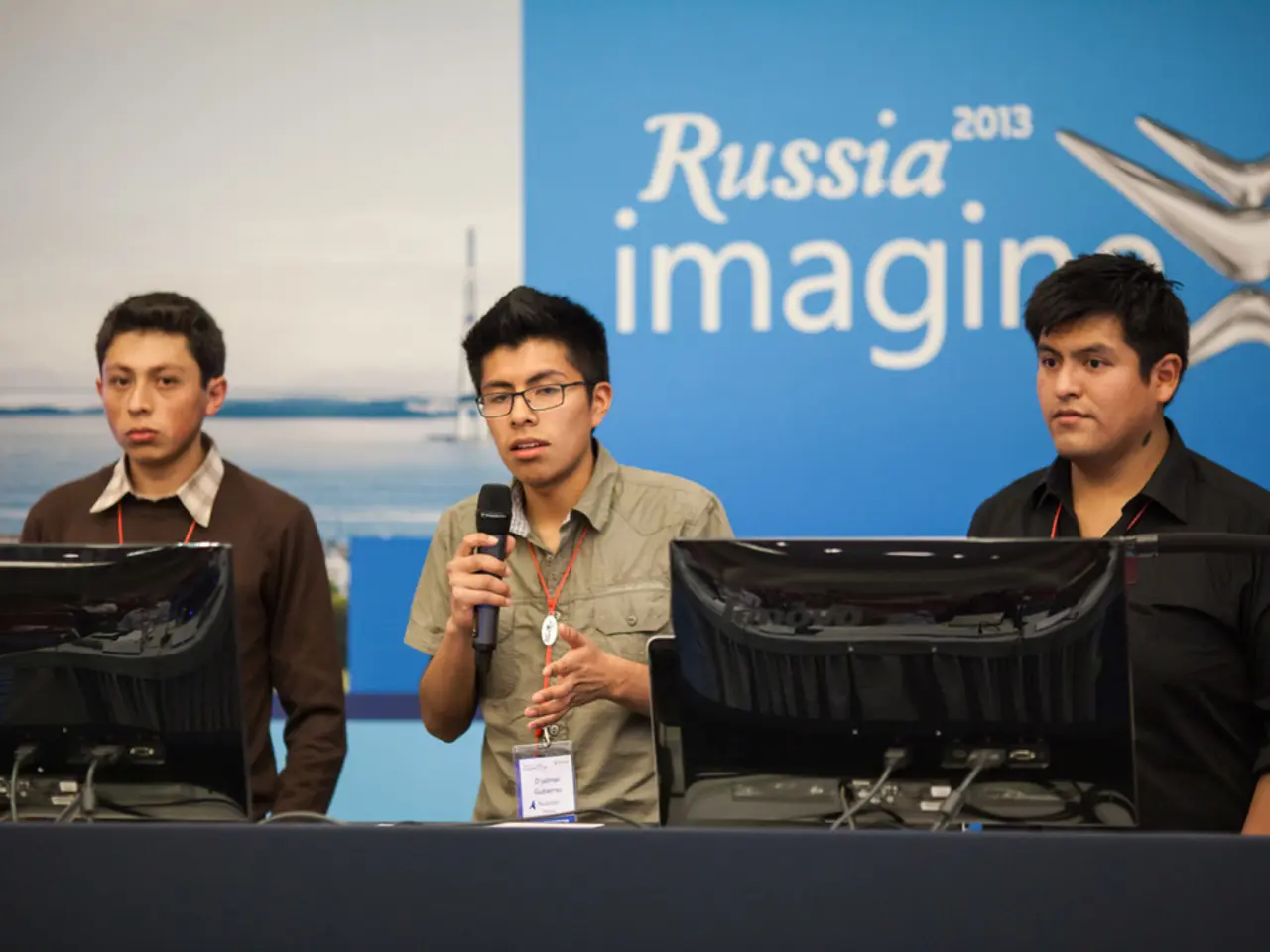Competitive AI sector expands with introduction of brain data transfer startup
In the realm of technological advancement, Neuralink, a California-based medical research firm, is making significant strides in developing brain-computer interfaces (BCIs) that could revolutionise human interaction with artificial intelligence (AI).
As of mid-2025, Neuralink has demonstrated practical, real-time integration between human brain activity and external machines, allowing users to control computer cursors, robotic limbs, and even a Tesla Optimus robot hand purely via neural signals [1]. This progress represents a pivotal moment in the development of BCIs, bringing us closer to matching human brain function directly with artificial intelligence.
At the heart of Neuralink's technology is the N1 Link chip, featuring 1,024 ultra-thin electrode channels for high-bandwidth wireless communication and inductive charging, eliminating the need for external wires [3]. The chip's design allows for implant removal or upgrades without causing deep tissue damage, opening up possibilities for immediate user applications such as thought-based cursor control and communication for people with disabilities, like ALS patients regaining outdoor communication [1][3].
Looking ahead, Neuralink's ambitions extend beyond these initial applications. The company aims to harness the full potential of BCIs, targeting broader capabilities like thought-typing, vision restoration via a device called Blindsight, mental health treatment, cognitive enhancements, and sensory feedback [1][3].
Elon Musk, the founder of Neuralink and CEO of Tesla, envisions a future where humans and AI systems are seamlessly integrated. He envisions a 'post-linguistic' communication era, transcending traditional speech or typing, and a world where humans can merge with AI to maintain competitiveness as AI advances [3]. More ambitious goals include full-body control of robotic limbs and spinal cord signal bridging to restore movement in paralysis, underscoring a pathway toward radical human-machine integration [1].
As Neuralink prepares for scaling up human implantations, plans are in place to implant thousands, and eventually millions, of devices [1][3]. The company is also developing a faster second-generation surgical robot to enhance implantation procedures [1]. Recruitment for clinical trials suggests human testing is expected or underway soon [2][3].
However, this groundbreaking technology is not without its challenges. Safety, ethical, and societal concerns remain under scrutiny as the technology continues to evolve [3]. As Neuralink pushes the boundaries of human-AI interaction, it is crucial to navigate these complex issues responsibly, ensuring that the benefits of this technology are harnessed for the betterment of humanity.
In summary, Neuralink's advancements in BCIs represent a significant step towards the long-term impact of matching human brain function directly with artificial intelligence. Successful widespread adoption could revolutionise communication, human disability treatment, cognition, and human-AI symbiosis. Yet, as this technology continues to evolve, it is essential to address the challenges that arise, ensuring that the benefits of this technology are harnessed responsibly and ethically.
Science and medical-conditions intersect in the realm of Neuralink's tech, as the company aims to harness BCIs for thought-based cursor control and communication for those with disabilities, such as ALS patients, ultimately improving health-and-wellness outcomes. The integration of technology, namely artificial-intelligence, with human brains, through Neuralink's developments, could potentially lead to cognitive enhancements and mental health treatments.




